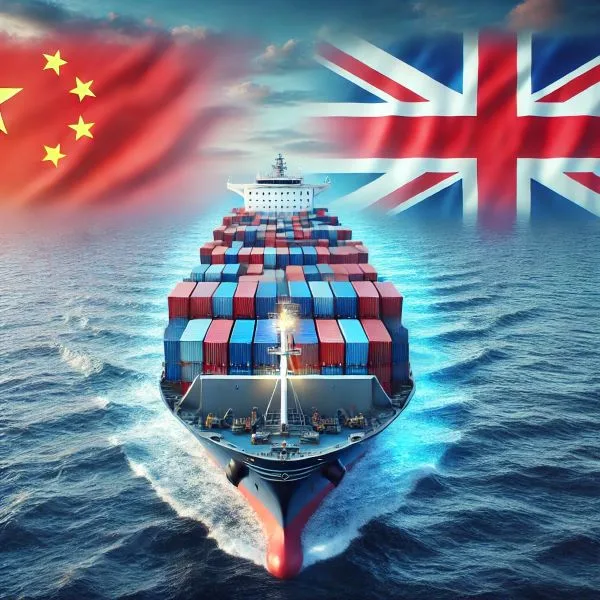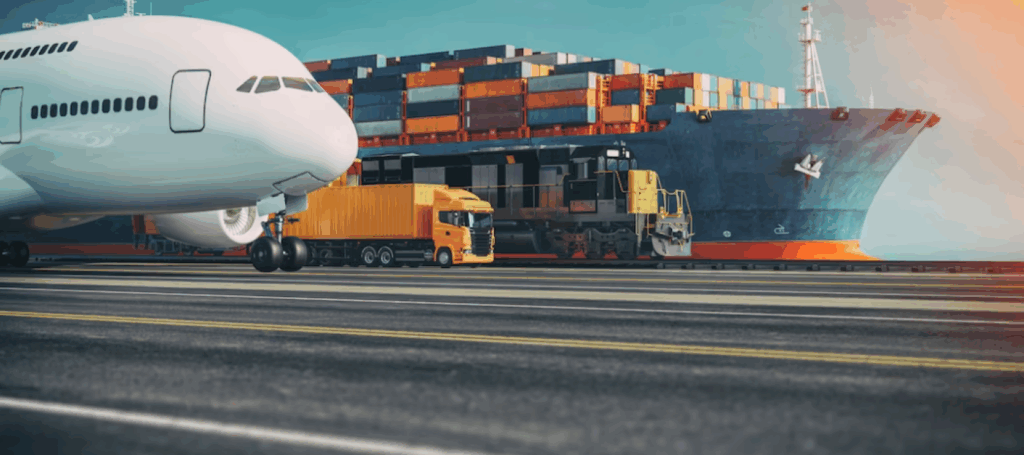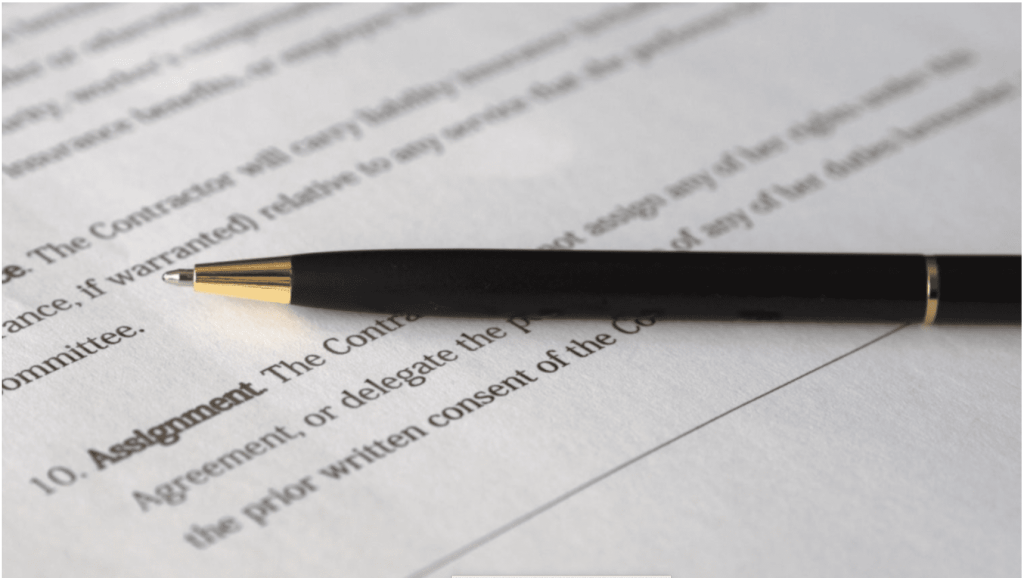- By TOP CHINA FREIGHT
- September 3, 2025
- Shipping
Table of Contents
Understanding shipping costs from China to UK is crucial for businesses and individuals importing goods. Shipping expenses vary based on method, cargo type, seasonal demand, and customs. This guide explains how to manage shipping costs efficiently, covering sea, air, rail, and express courier options.

What Are the Main Shipping Methods from China to UK?

There are four primary shipping options: sea freight, air freight, rail freight, and express courier services. Each method has unique advantages depending on urgency, shipment size, and budget.
| Shipping Method | Average Cost | Transit Time | Pros | Cons |
|---|---|---|---|---|
| Sea Freight (FCL/LCL) | $1,200–$3,800 per container | 28–40 days | Economical for bulk shipments | Slow, port handling required |
| Air Freight | $5–$10 per kg | 5–8 days | Fast, ideal for urgent goods | Expensive for heavy cargo |
| Rail Freight | $2,000–$4,000 per 40ft container | 15–22 days | Faster than sea, cheaper than air, eco-friendly | Limited network, not door-to-door |
| Express Courier | $12–$25 per kg | 3–7 days | Door-to-door, tracking included | High cost for large volumes |
Tip:
Use sea freight for bulk shipments, air freight for urgent high-value goods, and rail freight for medium-sized industrial shipments. Express is best for small parcels.
How Are Shipping Costs from China to UK Calculated?
Several factors influence the final shipping cost:
| Factor | Explanation |
|---|---|
| Cargo Weight & Volume | Heavier or larger shipments cost more |
| Shipping Method | Sea freight is cheaper, air and express more expensive |
| Seasonal Demand | Peak periods like Chinese New Year or Black Friday increase rates |
| Port Fees & Surcharges | Handling fees, fuel surcharges, and customs clearance impact total costs |
Typical Costs for Sea, Air, and Rail Freight
| Shipping Type | Container/Parcel Size | Approximate Cost (USD) | Transit Time |
|---|---|---|---|
| Sea Freight FCL 20ft | 20–25 m³ | $1,200–$2,000 | 28–35 days |
| Sea Freight FCL 40ft | 40–45 m³ | $2,000–$3,800 | 30–40 days |
| Sea Freight LCL | <1 full container | $60–$160 per m³ | 28–40 days |
| Air Freight | 10–50 kg | $5–$10 per kg | 5–8 days |
| Rail Freight 20ft | 20–25 m³ | $1,500–$2,800 | 15–22 days |
| Rail Freight 40ft | 40–45 m³ | $2,000–$4,000 | 15–22 days |
Tip:
Compare FCL, LCL, and rail options to determine the most cost-effective method for your cargo.
How Does Transit Time Affect Shipping Costs?
| Method | Transit Time | Notes |
|---|---|---|
| Sea Freight | 28–40 days | Reliable for bulk shipments, slower but cost-effective |
| Air Freight | 5–8 days | Fastest for medium-weight cargo, ideal for urgent shipments |
| Rail Freight | 15–22 days | Moderate speed, suitable for industrial goods and electronics |
| Express Courier | 3–7 days | Fastest for small parcels, high cost |
Tip:
Always include inland transportation in the UK when calculating total delivery time.
What Documents Are Needed for Shipping from China to UK?

Proper documentation ensures smooth customs clearance:
| Document | Purpose |
|---|---|
| Commercial Invoice | Declares item value, buyer, and seller info |
| Packing List | Details content, weight, and dimensions |
| Bill of Lading (B/L) | Required for sea freight |
| Air Waybill (AWB) | Required for air shipments |
| Certificate of Origin | Confirms product origin |
| Import License | For restricted items |
| Insurance Certificate | Protects against loss or damage |
Tip:
A licensed freight forwarder can prepare all documents to ensure compliance.
Sea Freight vs Air Freight vs Rail vs Express

| Shipping Method | Pros | Cons | Best Use Case |
|---|---|---|---|
| Sea Freight | Economical for large shipments | Slow, port handling needed | Bulk products with low urgency |
| Air Freight | Fast and reliable | Expensive | Urgent shipments, electronics |
| Rail Freight | Moderate speed, cost-effective, eco-friendly | Limited network | Medium-weight industrial goods |
| Express Courier | Fastest, door-to-door | High cost | Small parcels, e-commerce |
Case Study:
A UK electronics retailer imported 500 components from Wuhan via rail freight. Arrival was in 18 days—faster than sea freight and 60% cheaper than air. Proper documentation and a reliable freight forwarder ensured no customs delays.
How Can a Freight Forwarder Help Reduce Shipping Costs?
Freight forwarders provide essential support:
- Consolidate small shipments (LCL) to save cost
- Negotiate competitive freight rates
- Prepare accurate customs documentation
- Provide real-time tracking and status updates
How to Track Shipments from China to UK
Tracking is crucial for timely delivery:
1.Air freight and express shipments:
track using AWB or tracking number
2.Sea freight:
track via container number
3.Rail freight:
track at major terminals with updates on arrival and transit
Tip:
Ensure your forwarder provides clear tracking to manage UK warehouse planning efficiently
Common Challenges When Shipping from China to UK
- Customs delays due to incomplete or incorrect paperwork
- Seasonal surcharges increasing overall costs
- Transit delays from weather, port congestion, or global bottlenecks
- Cargo damage from poor packaging or handling
Tip:
Insure your shipments and choose experienced forwarders to reduce risks.
Example: Shipping Furniture from Shanghai to London
| Parameter | Details |
|---|---|
| Shipment Type | FCL 40ft container via sea freight |
| Cargo | 200 furniture pieces |
| Cost | $3,000 including customs and insurance |
| Transit Time | 32 days |
| Outcome | Delivered on time, no customs issues |
This shows how proper planning and a reliable freight forwarder ensure safe, timely, and cost-effective delivery.
Conclusion
Understanding shipping costs from China to UK requires analyzing sea, air, rail, and express courier options. Rail freight offers a balanced solution between speed and cost, while sea freight suits bulk shipments, and air or express is ideal for urgent deliveries. Accurate documentation, proper packaging, and working with a trusted freight forwarder ensure cost-efficient, timely, and safe delivery. By applying these strategies, businesses can maintain reliable supply chains and meet market demands effectively.
Need a Shipping Quote?
If you want expert guidance and peace of mind, our team is ready to assist.
TJ China Freight offers tailored solutions to help businesses of all sizes ship more reliably from China.

FAQs
Q1:Can small shipments use rail freight?
Yes, LCL (Less than Container Load) allows multiple small shipments to share one rail container, lowering per-unit costs while maintaining efficiency.
Q2:Are shipping costs higher during peak seasons?
Yes, global demand spikes like Chinese New Year, Black Friday, or Christmas increase shipping costs. Plan ahead for off-peak periods to save money.
Q3:Do I need insurance for shipments from China?
Insurance is strongly recommended to protect against theft, loss, or damage during transit. Forwarders typically offer customizable coverage for all shipment types.
Q4:How can I reduce air freight costs?
Consolidate shipments, plan ahead, and optimize package weight and volume. Using a reliable freight forwarder can also secure discounted rates.
Q5:How do I choose the best shipping method?
Consider cargo type, weight, urgency, cost, and destination. Sea freight is cost-effective for bulk, air and express for urgent parcels, and rail for medium-weight, time-sensitive goods.
